By Ellen Bond
In October 2020, I found an article from the Nunatsiaq News about the Canadian $2 bill printed by the Bank of Canada from 1975 to 1979. The bank note was the first Canadian bill to show Indigenous people. Through further research, I found two other articles about the same bill, another from the Nunatsiaq News in 2018 and one from the Bank of Canada Museum blog in 2020. In the 2018 Nunatsiaq News article “Taissumani, April 7,” there is a photo of the back of the $2 bill, on which the names of those featured on the bank note are written in syllabics by the late Leah Idlout.
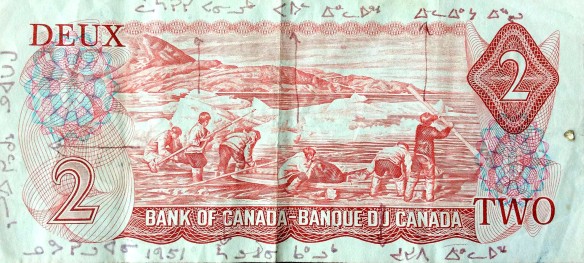
The late Leah Idlout wrote the names of the six men on the back of the Canadian $2 bill in syllabics. (Image courtesy of John MacDonald and the Bank of Canada.)
Below is a chart showing various spellings of the featured Inuit men’s Inuktitut names. The names in the first column will be used in this blog.
 The $2 bill was created from an engraving by C. Gordon Yorke based on the photograph taken in 1951 by filmmaker Doug Wilkinson for his film Land of the Long Day. While the actual film is available “onsite only” in the collection held at Library and Archives (LAC), it can be found online at the National Film Board (NFB). The location of the film was Joseph Idlout’s camp at Alukseevee Island, about 60 kilometres from Mittimatalik (also known as Pond Inlet), Nunavut (formerly the Northwest Territories). The scene depicts hunters preparing their qajait (kayaks) to chase, spear and retrieve narwhals spotted swimming in the water and resting among ice floes.
The $2 bill was created from an engraving by C. Gordon Yorke based on the photograph taken in 1951 by filmmaker Doug Wilkinson for his film Land of the Long Day. While the actual film is available “onsite only” in the collection held at Library and Archives (LAC), it can be found online at the National Film Board (NFB). The location of the film was Joseph Idlout’s camp at Alukseevee Island, about 60 kilometres from Mittimatalik (also known as Pond Inlet), Nunavut (formerly the Northwest Territories). The scene depicts hunters preparing their qajait (kayaks) to chase, spear and retrieve narwhals spotted swimming in the water and resting among ice floes.

Photo was used to create the engraving for the back of the 1975–1979 Canadian $2 bill. Left to right: Crouching next to a qajaq, Gideonie Qitsualik inflates a sealskin float; Lazarus Paniluk lifts a harpoon; Herodier Kalluk loads a qajaq; Ullattitaq inflates a sealskin float; Joseph Idlout shifts a qajaq into the water; and Elijah Erkloo raises a paddle. Photo was taken during the filming of Land of the Long Day, directed by Doug Wilkinson, Nuvuruluk, Nunavut, 1952. Source: Doug Wilkinson, Baffin Island, Canada, around 1951, NCC 1993.56.541.
Many photographs in the collection held at LAC were acquired and catalogued without detailed information or without information from original inscriptions and captions found on records. Hence, these photographs reflect the biases and attitudes of non-Indigenous society at the time. Project Naming is an initiative conceived by Nunavut Sivuniksavut that initially sought to identify the names of Inuit depicted in archived photographs. Begun in 2002 as a collaboration between Nunavut Sivuniksavut, the Government of Nunavut and the National Archives of Canada (now LAC), Project Naming was later expanded to include First Nations and Métis from across Canada. It posts archived photographs to its social media pages. The date, location, event or other identifying information for the photographs may also be missing or may be limited.
The three articles about the $2 bill had our interest piqued. This made us wonder, in a reverse Project Naming way, does LAC have other named photographs of these men? Here is what we found:
Gideonie Qitsualik – On the $2 note, Gideonie is located at the far left. Leaning over a qajaq, he is inflating a sealskin float. There is one other photo (below) of Gideonie in the LAC collection. It was taken at about the same time. In this photo, Gideonie is second from left. Gideonie later became a well-known Anglican minister in Gjoa Haven, Nunavut.
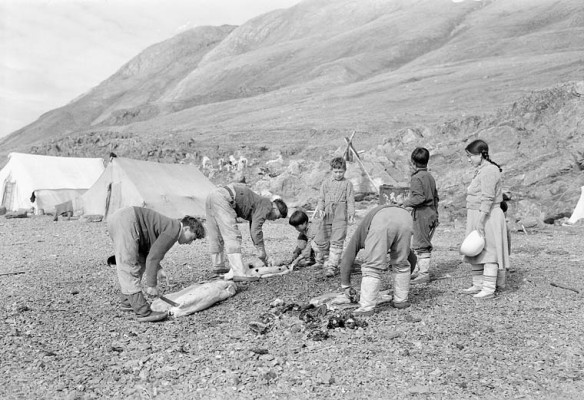
At front right, Joseph Idlout is bending over. The others, from left to right, are Herodier Kalluk, Gideonie Qitsualik, Daniel Komangaapik, Uirngut, Ullattitaq (Paul Idlout), and Rebecca Qillaq Idlout. They are cutting up seals. (PA18905)
Lazarus Paniluk – Lazarus is the second man from left on the $2 bill. He is holding a harpoon. He has not yet been named in any other photos in the LAC collection.
Herodier Kalluk – Herodier is the third man from left on the $2 note. He is loading the qajaq. There are two other photos of Herodier in the LAC collection. In this photo, below, taken in 1952, Herodier is on the left, and Joseph Idlout is on the right. Idlout had just caught a seal with his harpoon. Herodier is the grandfather of Juno Award-winning singer Tanya Tagaq.
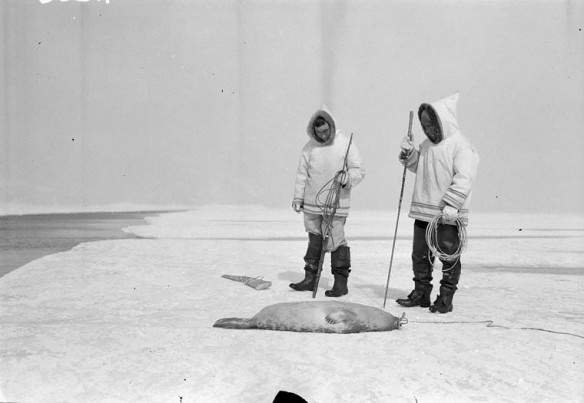
Herodier Kalluk (left) and Joseph Idlout look at a harpooned seal on the ice off Button Point, near Mittimatalik/Tununiq, Nunavut. (PA145172)
Ullattitaq – Ullattitaq (also known as Paul Idlout) is the fourth man from left on the back of the $2 bill. He is shown inflating a sealskin float. There are two other named photos showing Ullattitaq in the LAC collection. The photo below shows Ullattitaq as a young boy in September 1945 in Mittimatalik/Tununiq. Ullattitaq later became Bishop of the Arctic.
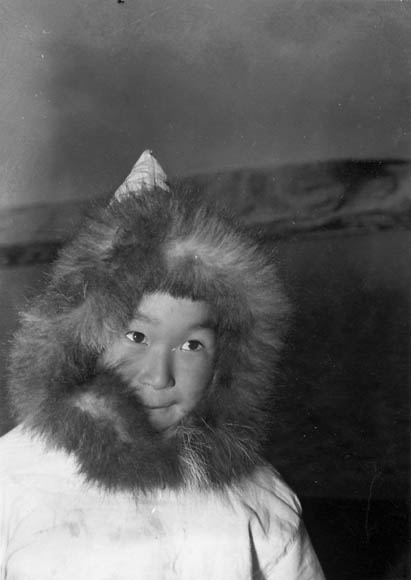
Ullattitaq (Paul Idlout) at Mittimatalik/Tununiq, Nunavut, September 1945. (e002344212)
Joseph Idlout – Joseph, the fifth man from left on the back of the $2 note, who is shifting a qajaq into the water, was the leader of a small community of families, including the Aulatsivik hunting camp, where Doug Wilkinson filmed his movie. Joseph is the person with the most photos in the LAC collection: he is featured in nine! Joseph is in the middle in the photo below.
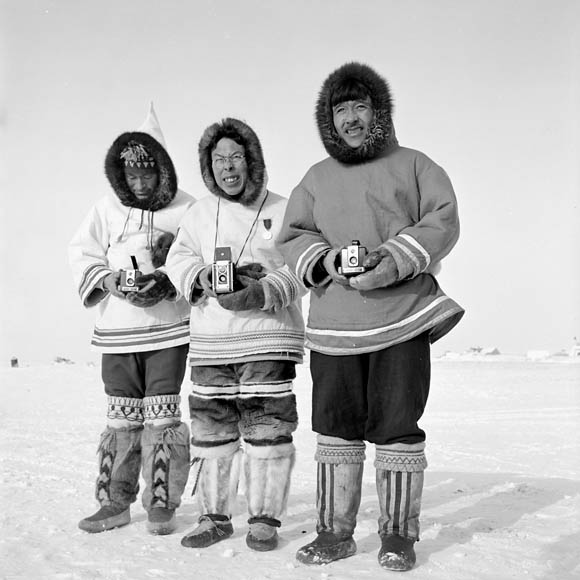
From left, Daniel N. Salluviniq (Saudlovenick), Joseph Idlout, and Zebeddie Amarualik, all holding Brownie cameras as they await the arrival of the Governor General, Vincent Massey, in Qausuittuq (also known as Resolute Bay), Nunavut, March 1956. (e002265651)
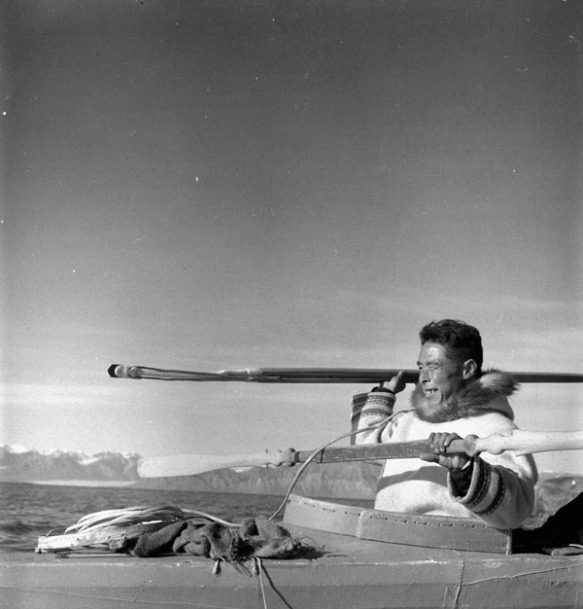
Joseph Idlout prepares to throw an ivory harpoon from his qajaq, Mittimatalik/Tununiq, Nunavut, July 1951. (R002169)
Elijah Erkloo – Elijah is the first man at right in the image on the back of the $2 bill. He is getting one of the paddles ready. A search for Elijah did not turn up any photos, but there is a photo of his grandfather. According to the two articles in the Nunatsiaq News, Elijah was a young boy when the film was filmed. Elijah later became the MLA for Amittuq (formerly Foxe Basin). Elijah notes that Joseph Idlout, his uncle, was the leader in camp. This is probably why LAC has so many photos of Joseph.

Akomalee of Baffin Island, 1924. Akomalee, the grandfather of Elijah Erkloo, was a local Elder of Mittimatalik, Nunavut. (PA102276)
Identification of people and learning their names is important. The work of Project Naming has provided opportunities to identify individuals and give back to communities across the country. If you or anyone you know has more information about the men of the $2 bill, please let us know. That can include other photos of them in the collection at LAC in which they are not named, or more information about any of the individual men. We can then add this new information to the records, making them more complete.
Project Naming social media pages:
- Facebook: @project.naming
- Twitter: @project_naming
Ellen Bond is a Project Assistant with the Online Content team at Library and Archives Canada.

![On the left of the graphic, Tatânga Mânî [Chief Walking Buffalo] [George McLean] in traditional regalia on horse. In the middle, Iggi and girl engaging in a “kunik”, a traditional greeting in Inuit culture. On the right, Maxime Marion, a Métis guide stands holding a rifle. In the background, there is a map of Upper and Lower Canada, and text from the Red River Settlement collection.](https://thediscoverblog.files.wordpress.com/2019/02/blog-banner-1.jpg?w=584)
I always say that knowing and using anyone’s name is the highest form of respect for that person. Excellent work, Ellen!
Thank you Uncle Fred. I appreciate you reading my blog, and all of our blogs. It’s appreciated!
Well done ellen, excellent work and interesting article!
The project is starting to bear fruit,
good continuation Ellen, I can’t wait to read the following.Thanks
Thank you Hassan. We all appreciate your contributions to Project Naming. Your networking gets names into records, and we can’t thank you enough for doing so.
Wonderful work – such a fascinating story and so well written. Project naming continues to bring important recognition to the national collection while emphasising the often overlooked and marginalized histories of Canada’s Indigenous peoples.
The products of the program are truly impressive, as are the skills and contributions of the team’s staff. I look forward to sharing in more of the team’s discoveries as they are made. Ellen, thanks for a wonderful read.